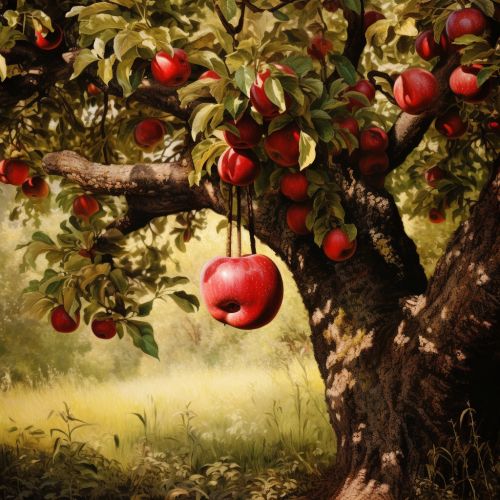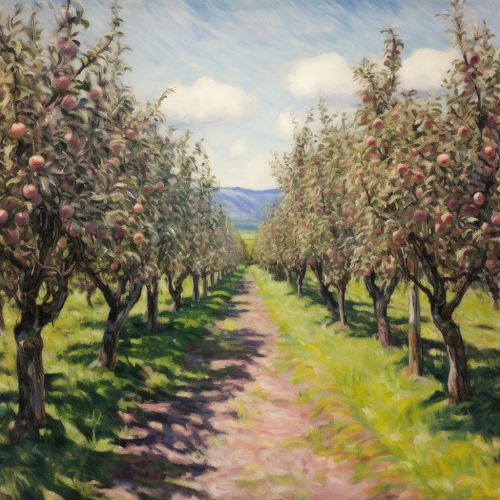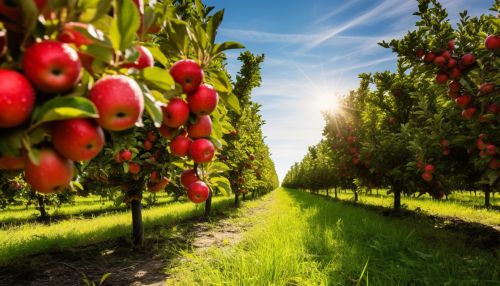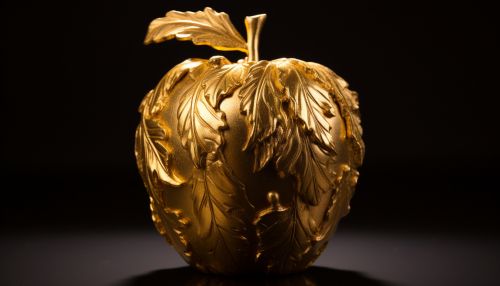Apple
Introduction
The apple (Malus domestica) is a deciduous tree, a member of the family Rosaceae, which is cultivated for its edible fruit. The term "apple" is also used to refer to the fruit borne by this tree. Apples are among the most extensively cultivated tree fruits globally. The apple tree is believed to have originated from Central Asia, where its wild ancestor, Malus sieversii, is still found today.


History
The cultivation of apples can be traced back to at least 3000 BC. Archaeological evidence suggests that apples have been a part of human diet since the Neolithic period. Apple seeds have been discovered in prehistoric lake dwellings in Switzerland, dating back to the Iron Age. The Greeks, Etruscans, Romans, and Celts were known to cultivate apples. The Romans, in particular, are believed to have played a significant role in spreading apple cultivation across Europe.


Cultivation
Apple trees can grow quite large if propagated from seed, but remain relatively small if grafted onto roots (rootstock). Over 7,500 known cultivars of apples exist, each bred for a range of desired characteristics. These different cultivars cater to various tastes and uses, including cooking, raw consumption, and cider production.


Production
As of 2014, the leading apple producers globally were China, the United States, India, and Russia. In 2017, the global production of apples reached 83.1 million tonnes, with China contributing 49.8% of the total yield.


Consumption
Apples can be consumed in a variety of ways: as juice, raw in salads, baked in pies, cooked into sauces and spreads such as apple butter, and in other baked dishes. Many commercially sold apples are coated with a layer of wax to extend their shelf life. Some may also be cleaned with a mild bleach solution to remove any dirt.


Health Effects
Apples are rich in dietary fiber, antioxidants, and flavonoids. Consumption of apples has been associated with a variety of health benefits, including a reduced risk of cancer, heart disease, asthma, and type 2 diabetes. However, apple seeds are mildly toxic, containing a small amount of amygdalin, a cyanogenic glycoside.
Cultural Significance
Apples hold significant cultural and mythological value in many societies, including Norse, Greek and Christian traditions. In Norse mythology, apples were considered sacred and believed to keep the gods youthful. In Greek mythology, apples were associated with Aphrodite, the goddess of love.


